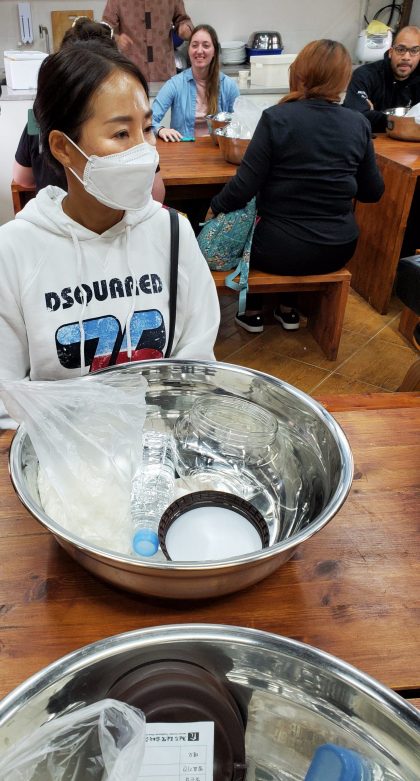Fall and the Harvest Moon
Sunday gratefuls: Jeonju. Traveling with my son and Seoah. Making rice wine. The bus ride. The rest stop area with so much on offer. Murdoch wiggling when we finally, finally got home. Korean traditional housing. Warm floors, central courtyard, blue tiled roof. Seoah and her 108 bows. Korean pears and apples. Land not covered with buildings covered with crops. Density.
Sparks of Joy and Awe: Memories
One brief shining: Streets of traditional Korean houses, hanok, now housing fortune tellers, coffee shops, souvenir dealers, craftspeople bustled with tourists and folks wearing hanbok, the traditional Korean clothing, women strolling with their hoop-skirts much like Southern belles at a fashion soreé while children ran down a water course that followed one of the streets and jugglers kept wooden discs in the air on small spindly poles.

Not quite what we expected. But fun anyhow. Not a Korean Williamsburg. More like a Korean fair with lots of kids laughing and eating ridiculous food on sticks. The occasional street performance by roaming jugglers and small bands. An air of festivity.
This area filled with over 700 traditional Korean homes has cobblestone streets which you can see in the picture above. Hard to walk on for me. Must have been a charming place to live in the early 20th century when it was built. Seoah says her parent’s original home was just like these. The home before the one Kate and I visited in 2016. Many of the houses in Okgwa are hanok homes still.
These homes featured walled courtyards, heated floors, the traditional tiled roof. Some of the best preserved have wonderful wooden doors with iron hinges, door pulls and decorative features.
Jeonju has a special place in Korean history. It is the ancestral home of the Yi family, the family of the first King of the Joseon dynasty. It also has a reputation as a city of the arts and culture. The hanok village that we visited lies inside the now more modern and much larger city.
 The Japanese occupation of Korea from 1910 to 1945 has cast a pall over contemporary Koreans. Got another taste of that in the first part of our trip. We made Korean rice wine.
The Japanese occupation of Korea from 1910 to 1945 has cast a pall over contemporary Koreans. Got another taste of that in the first part of our trip. We made Korean rice wine.
Making the wine itself was not hard. Put the rice in the bowl. Cover with yeast. Knead. A while later, pour in pristine water. Knead some more. Pour result into a covered jar. Take home, put in a shaded spot. Wait ten days.
The hard part lay in the narration of why we were doing this. During the occupation Japan imposed a prohibition on any liquor made in the home. Presumably to control restless, drunken resistance.
The old recipes, a part of folk culture, gradually withered away until no one had them anymore. Now the owner of this little DIY project has dedicated himself to seeing that his fellow Koreans never again lose their birthright. At least as it pertains to the making of rice wine.
The odd part for my son, Seoah, and me was that none of us drink. We brought ours home anyhow. My son will give it away to his squad when it’s ready.


